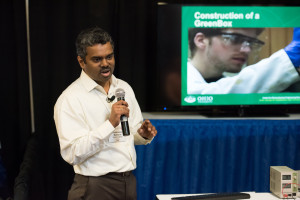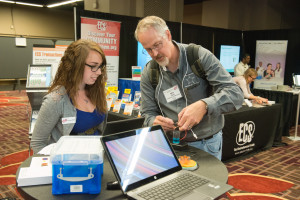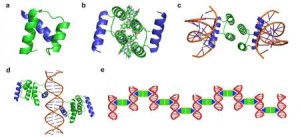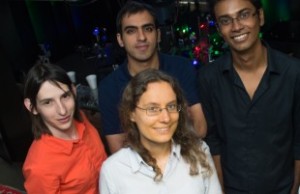
Madhivanan Muthuvel from the Center for Electrochemical Engineering Research at
Ohio University doing a demonstration on Urea Electrolysis or Pee to Power as part of Edison Theatre.
We have created a special opportunity for student members at the 228th ECS Meeting in Phoenix.
In the exhibit hall we have a booth which we are calling the Edison Theatre. Here we would like to give you the chance to:
- demonstrate a portion of the research you have been working on
- share projects you are taking to elementary and middle schools or community events
- share projects you are working on with peers or cohorts within your academic setting
This is meant to be a “show and tell.” Your presentation can be anywhere from 10-15 minutes long. You can do it once or multiple times during exhibit hours. We’ll be happy to help you with your demonstration.

Mike Zach demonstrating a new electrochemical nanomanufacturing method that’s simple and robust enough to perform on the trade show floor in the Edison Theatre.
Here’s a piece of a video that takes a quick look at Mike Zach at the Edison Theatre from the 227th ECS Meeting in Chicago:
We are scheduling slots in the Theatre on a first come first served basis. We would like to book them as soon as possible so we can start promoting them.
We hope you want to take this opportunity to show off you and your chapter’s hard work.
Contact Rob.Gerth@electrochem.org if you’re interested.



![[Click to enlarge]](https://www.electrochem.org/wp-content/uploads/2015/09/Shu-ShengLi_Stable-high-index-Ni-YSZ-300x293.png)

![[Click to enlarge]](https://www.electrochem.org/wp-content/uploads/2015/09/JCAP-T1_4-graphics-300x241.jpeg)
